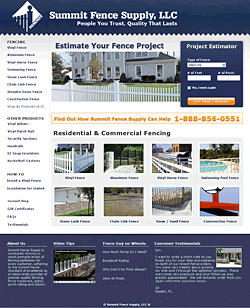This post focuses on a few high level heuristics and best practice approaches for creating a successful and profitable website.
Understand Visitors Are Pressed For Time
A key point to be aware of is visitors to your site are extremely busy and pressed for time. As such they don’t want to be forced to read information that isn’t relative to them.
Providing too much information too quickly can do as much damage as not providing enough at all. Visitors do not want to be forced to read a book to understand what benefit you are going to provide them.
Visitors to a website on average will only read about 20% of the text on the average page
Jakob Nielsen’s Alertbox, May 6, 2008:
Within moments visitors quickly scan the overall page, continue scanning some of the text, and then clicking on the trigger resembles the thing they’re looking for. Most of the page goes completely unnoticed.
When the visitor finds something promising they click. If the new page doesn’t meet visitors’ expectations, the Back button is clicked and the process is continued. Worse, the visitor leaves your site completely, costing you valuable sales.
3 Stages of Information Gathering
It’s important to note visitors go through different stages while searching for information.
Information Stages
- Scanning Information
- Gathering Information
- Requesting Information
They first are scanning the page for triggers giving them the confidence that they are 1) in the right place and 2) that you have the product or service to help them solve their current problem.
If those two considerations have been met the user is then engaged. Being engaged they are more willing to give you more of their valuable time. This is the appropriate time to provide them access to click in to more detailed information.
Finally, after they have engaged with your content they are more likely to request information. This is where users will be willing to fill out contact forms to download white papers, submit an online request and/or pick up the phone and call.
These three stages may happen all during the same session or during multiple sessions.
Focus Your Content
The content should be focused on your site visitors. It is important to understand what question visitors have when they come to your site, what problems they currently face and how your business is going to be able to help them.
Understand why someone is coming to your site and the goal they have in mind and then write your content to match the goals you identified. Ideas for content that may better answer visitor questions could be case studies, white papers or before and after results.
When writing for the web the style must be adjusted to cater to the how the visitor browses. Marketing fluff won’t be read. Long paragraphs without images or phrases set out in bold or italics will be skipped. Exaggerated language will be ignored. Avoid cute, marketing names, company jargon, and unfamiliar buzzwords. Be clear and stay focused.
Effective Online Content Should:
- Be concise and to the point
- Be scannable – logically organize the content, use multiple heading levels, use bulleted lists and include images to give visitors eyes a resting place
- Use clear and jargon free language
Your website plays a major role in whether a visitor decides to do business with your company. It is important to make sure your site is designed for success.
Does Your Website Get Results? If not, we can help. SFD’s experience and knowledge will help you get a better return on you website investment. Contact us today.

